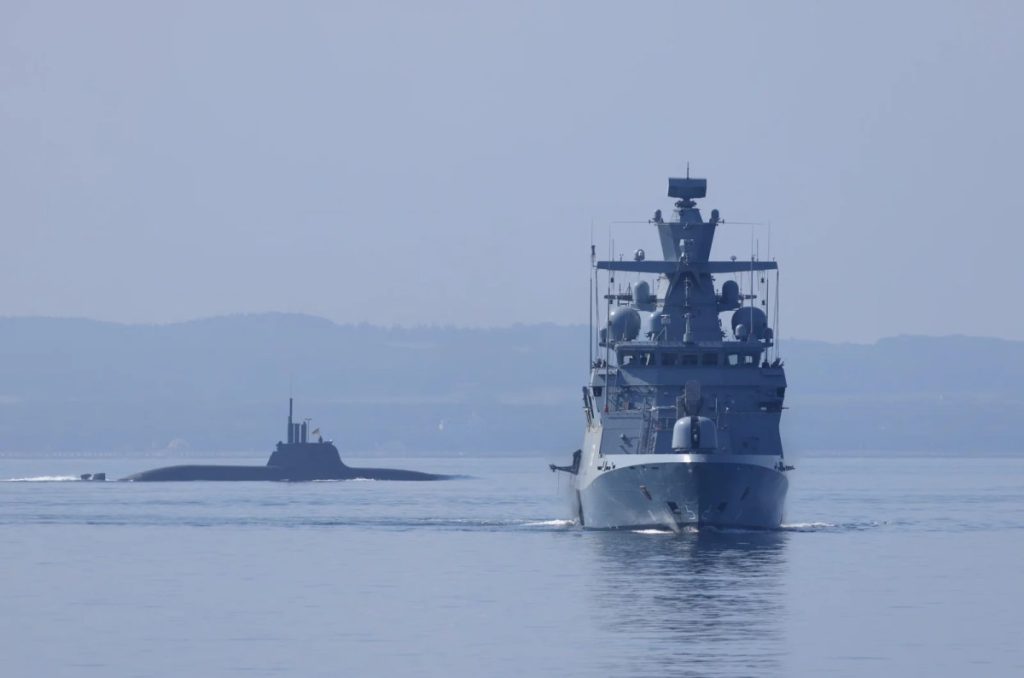
The Caribbean Sea has been reimagined as the battleground for a 21st-century iteration of gunboat diplomacy, where American sea power is being employed not so much against cartel organizations but—by design or by default—against the props of Nicolás Maduro’s regime. Officially framed as counter-narcotics, the strikes against cartel-linked vessels have an even deeper strategic meaning: they are targeting the illicit economic lifelines that prop up Venezuela’s struggling leaders.

In recent weeks, the Pentagon has concentrated in the southern Caribbean a variety of cutting-edge platforms: three Arleigh Burke-class destroyers, one amphibious assault ship, one nuclear-powered attack submarine, and a fleet of forward-deployed F-35 Lightning II fighter jets in Puerto Rico. The F-35’s low observable design and sensor fusion make it an ideal sea-based strike asset for targeting cueing Tomahawk Land Attack Missiles from beyond-the-horizon points. This configuration allows effective cartel facility or regime-related facility engagement while avoiding risk to U.S. personnel from Venezuela’s thin area-denial assets.

The Tomahawk’s inertial guidance with GPS, in combination with terrain contour matching, permits it to attack fixed inland targets from Puerto Rican-based ships. With a range of over 1,000 miles, these missiles will be able to penetrate deep inside Venezuelan territory, attacking cartel-controlled production centers or regime ministries with minimal warning. Experts note that such a standoff capability is consonant with the administration’s apparent willingness to keep operations below the threshold of a ground invasion but still retain escalation superiority.

The naval interdictions are of the character of a “presence blockade” under modern models of enforcement, constricting the movement of target ships short of a declaration of war. By treating cartel-allied traffickers as enemy fighters, Washington has merged counterterrorism and counternarcotics authorities, an innovation codified in the Specially Designated Global Terrorist (SDGT) designation of the Cartel de los Soles. This legal framework functions to maximize operational flexibility, authorizing lethal interdictions in foreign oceans and possibly in Venezuelan territorial seas.

Maduro’s government has merged state institutions with transnational criminal and terrorist groups. Hezbollah operatives planted in Venezuelan security forces launder cocaine earnings at regional hubs, and ELN guerrillas provide armed security services for illicit mining and trafficking corridors. Iranian military assistance has added Peykaap-class missile patrol boats and UAV production capabilities, enhancing asymmetric naval defense. Attacking cartel vessels, therefore, disrupts not just smuggling corridors but Maduro’s broader alliance system with Tehran and its proxies.

The reopening of Roosevelt Roads Naval Station and the use of the Port of Ponce have established Puerto Rico as a logistics hub for frequent deployments to the Caribbean. Facilities of the National Guard offer basing for P-8A Poseidon maritime patrol aircraft with the reach into Venezuelan waters. This forward basing supports both high-tempo interdictions and readiness for precision strikes, obviating basing limitations that have hindered U.S. operations in Latin America.

The Bolivarian Navy’s blue-water capability is limited. Its Mariscal Sucre-class frigates are in dubious operational condition, and its two 1970s-era submarines likely sit in mothballs. Maritime exercises have included Iranian-provided Peykaap speedboats and improvised missile launchers on naval patrol boats, but analysts such as Andrea Resende describe the fleet as “on the cusp of obsolescence.” Any American blockade or interdiction operation would face minimal high-seas opposition, transferring the deterrence challenge to Venezuela’s Sukhoi fighter squadron armed with Kh-31 anti-ship missiles.

Though Venezuela’s regular armed forces are weak, its cartel allies retain asymmetric counter-retaliation capacity—again seemingly against DEA agents or U.S. citizens in the Caribbean. The administration’s dependence on Title 50 covert action authorities and the 2001 AUMF reflects earlier applications against al-Qaeda terrorists, highlighting the doctrinal evolution to treating narco-terror networks as hostile armed groups. Regional reactions are split, with Colombia’s Gustavo Petro and Brazil’s Inácio Lula da Silva protesting, while Caribbean states quietly enjoy the pressure on the trafficking routes of Venezuela.

By eroding the financial support base built upon cartel activity, Washington aims to render Maduro’s regime unsustainable short of overt invasion. As Brent Sadler put it, “You don’t have to go in guns blazing—you let it crumble under its own weight.” The synergy of precision strike capability, naval interdiction, and economic isolation is a multi-domain pressure campaign. Whether or not this will lead to regime collapse or bring concessions will hinge on keeping operational tempo and stopping the ability of the regime to shift illicit revenue streams.

The changing shadow war in the Caribbean is as much about shaping minds as about sending ships to the bottom. In the calculus of coercive diplomacy, each interdiction communicates the message that the shield of Venezuela’s military umbrella over cartel operations is not invulnerable—altering the regime’s patrons’ risk-reward calculation and speeding up its political collapse.


